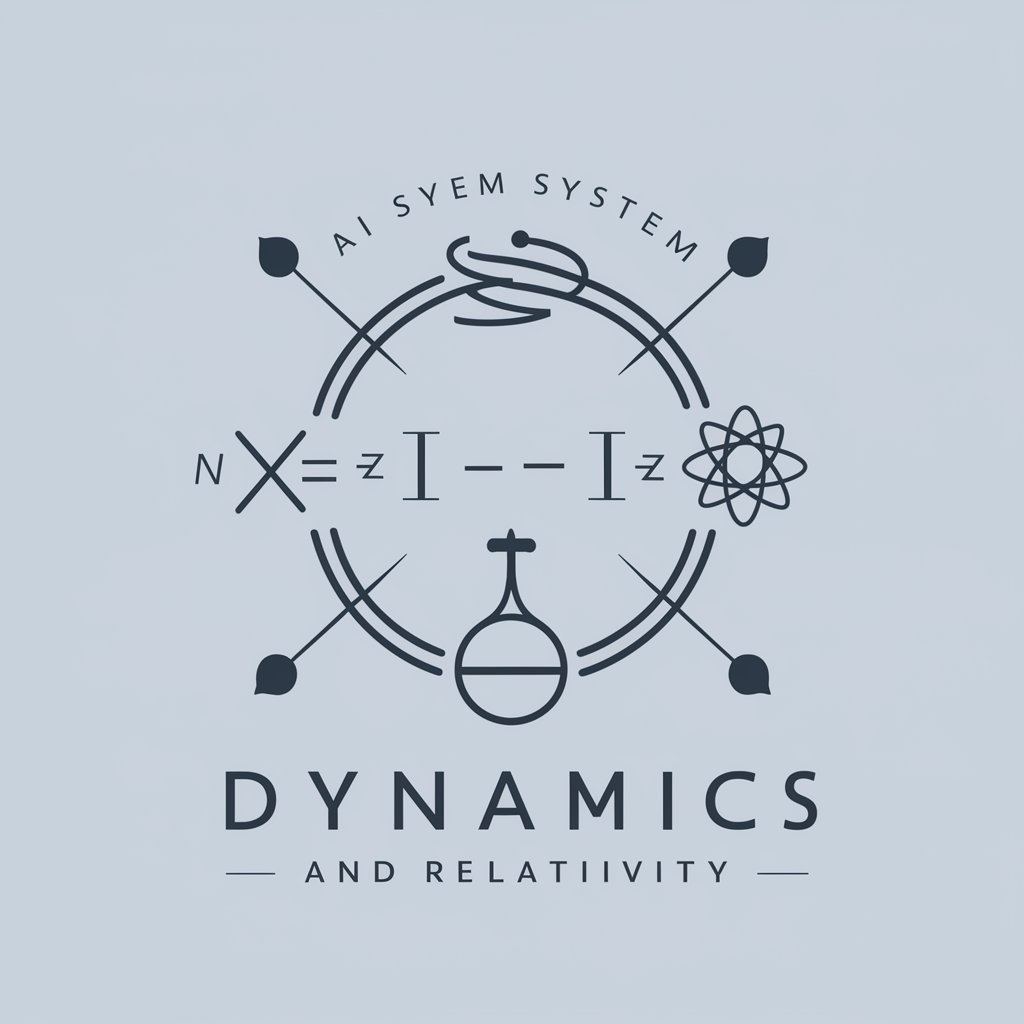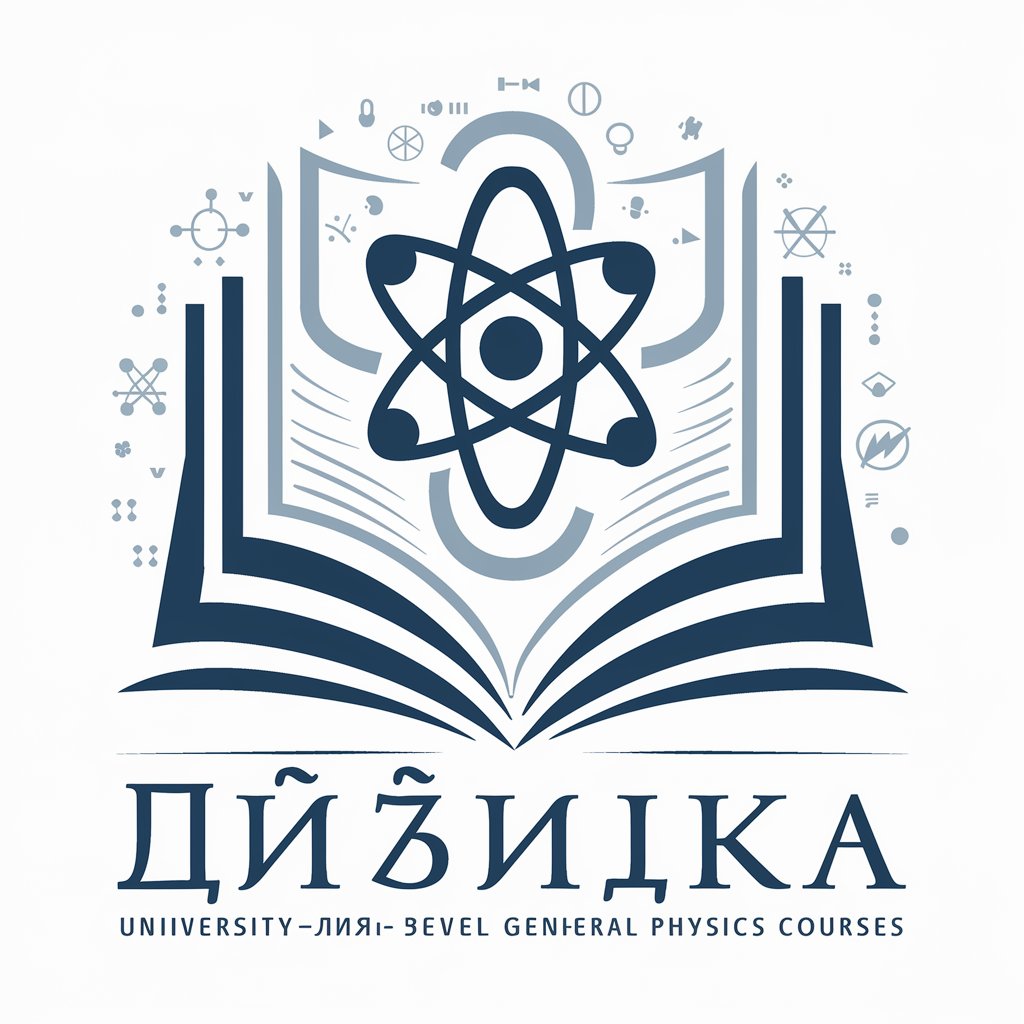
Relativity Velocity Calculator - Relativistic Velocity Estimations

Welcome! Let's explore relativistic velocity calculations.
Calculating Speed at the Edge of Light
Calculate the velocity of an object given its energy and mass at relativistic speeds.
Explain the theory of relativity as it applies to high-energy particle calculations.
Determine the behavior of objects in relativistic systems using energy and mass.
Provide a detailed example of velocity calculations for a particle in an accelerator.
Get Embed Code
Introduction to Relativity Velocity Calculator
The Relativity Velocity Calculator is a computational tool designed to calculate the velocity of an object moving at relativistic speeds, where the effects of Einstein's theory of relativity become significant. This calculator uses the formula E = mc^2 / √(1 - v^2/c^2), which relates an object's energy (E), mass (m), and velocity (v) with the speed of light (c). The design purpose of this calculator is to support fields where precise calculations of relativistic velocities are crucial, such as in particle physics, astrophysics, and advanced engineering projects. For example, it can calculate the velocity of particles in a collider where speeds approach that of light, or determine the kinetic energy of cosmic rays. The calculator not only performs computations but also aids in understanding the relativistic effects on mass, energy, and time, making it a valuable educational tool. Powered by ChatGPT-4o。

Main Functions of Relativity Velocity Calculator
Velocity Calculation from Given Energy and Mass
Example
Calculating the velocity of a proton in a particle accelerator given its kinetic energy and rest mass.
Scenario
In particle accelerators, particles are accelerated to high energies. Using the energy imparted to a proton and its rest mass, the calculator can determine its velocity, essential for understanding collision dynamics and the resulting particle interactions.
Energy Requirement for Target Velocity
Example
Determining the energy needed to accelerate a spacecraft to a fraction of the speed of light.
Scenario
For interstellar missions, calculating the energy required to reach relativistic speeds is crucial for propulsion system design. This calculator helps engineers estimate the energy needed to achieve a desired velocity, taking into account relativistic effects.
Relativistic Mass Increase
Example
Estimating the increase in mass of an electron moving at relativistic speeds.
Scenario
In high-energy physics experiments, understanding how the mass of particles like electrons increases with velocity is vital for predicting their behavior under extreme conditions. The calculator provides insights into mass variations as velocities approach the speed of light.
Ideal Users of Relativity Velocity Calculator Services
Particle Physicists
Researchers working in particle physics require accurate calculations of particle velocities in accelerators to analyze collision outcomes and particle interactions. This calculator aids in their experimental design and data interpretation.
Astrophysicists
Astrophysicists studying high-energy astrophysical phenomena, such as jets from black holes or cosmic ray interactions, benefit from precise relativistic velocity calculations to model these events and understand their implications for cosmic evolution.
Aerospace Engineers
Engineers designing spacecraft for missions involving high velocities, such as probes to other planets or interstellar travel concepts, use this calculator to estimate energy requirements and assess the feasibility of propulsion systems under relativistic conditions.

How to Use Relativity Velocity Calculator
Start Your Experience
Begin by accessing yeschat.ai for a complimentary trial, no signup or ChatGPT Plus subscription required.
Enter Parameters
Input the object's rest mass and total energy into the designated fields. Ensure these values are in compatible units (e.g., kilograms for mass, joules for energy).
Understand the Equation
Familiarize yourself with the underlying equation, E = mc^2 / √(1 - v^2/c^2), to better understand how the calculator determines velocity.
Calculate Velocity
Hit the 'Calculate' button to compute the object's velocity. The tool uses the speed of light (c) as a constant in its calculations.
Interpret Results
Review the calculated velocity, presented in meters per second, and utilize the provided context to interpret its significance in your specific scenario.
Try other advanced and practical GPTs
System Log and Security Analyst
Uncover Insights, Enhance Security

Linguist Explorer
AI-Powered Linguistic Insights

3D Spatially Optimized Environment Image Generator
Craft Your World with AI

SOOPL Interpreter
Transforming Speech into Code Seamlessly

🎁 Charlie Brown Christmas Card
Craft custom Charlie Brown holiday cards with AI

Virtual Interior Designer GPT
Revolutionize Your Space with AI

怪盗シャドウの予告状
Solve Mysteries with AI-powered Detective Work

楽天ROOM快適レビュアー
Empower Your Reviews with AI

Job Recruiter
AI-powered Career Advancement

Nose Art Navigator
Reviving history through AI-powered art.

BitordinalverseGPT
Empowering Crypto Creativity with AI

Tate LegalAI
Empowering legal understanding with AI

FAQs about Relativity Velocity Calculator
What is the accuracy range of the Relativity Velocity Calculator?
The calculator provides highly accurate velocity estimations for objects moving at significant fractions of the speed of light, considering relativistic effects accurately within the limitations of numerical precision in computing.
Can I use this tool for non-relativistic speeds?
Yes, while the tool is optimized for relativistic speeds close to the speed of light, it can also provide accurate velocity calculations for lower, non-relativistic speeds, automatically accounting for relativistic effects that become negligible.
How does mass affect the calculated velocity?
The rest mass of the object is crucial for calculating relativistic velocity. As mass increases, the energy required to achieve a given velocity increases, demonstrating the relationship between mass, energy, and velocity in relativity.
What units should I use for input?
Inputs should be in standard scientific units: kilograms (kg) for mass and joules (J) for energy. The calculator assumes these units to maintain consistency and accuracy.
Is this tool suitable for educational purposes?
Absolutely. The Relativity Velocity Calculator not only computes velocities but also serves as an educational tool by providing insights into the principles of relativity, making it a valuable resource for students and educators alike.





